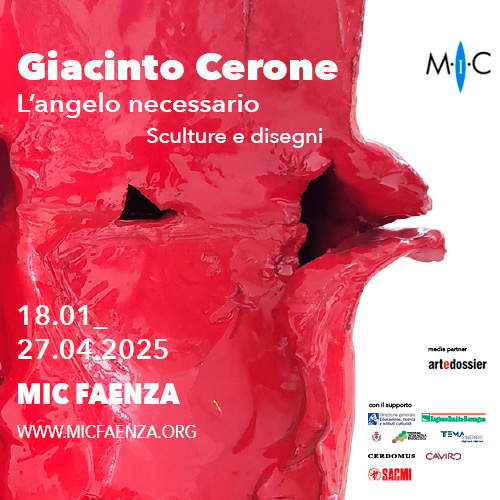A documentary dedicated to Andrea Mantegna is coming to Rai5.
A documentary entirely dedicated to Andrea Mantegna: it will air in first view on Wednesday, March 6, at 9:15 p.m., on Rai5. Entitled Andrea Mantegna. Passion of Stone, and it is a Rai Cultura production, written by Emanuela Avallone and directed by Linda Tugnoli. The film tells the story of the artist born in Isola Carturo, a small country village on the banks of the Brenta River that today has taken the name Isola Mantegna in his honor. Born into the simple family of a carpenter, Andrea Mantegna went on to become one of the most acclaimed artists among his contemporaries and one of the most beloved to this day. The docufilm’s journey begins in Vicenza, and touches Padua, Venice, Verona and then Mantua in the late 15th century, and crosses the centuries to arrive in London, Florence and Milan in the present day, in the footsteps of a tenacious, tough artist with a “petrous” character whose original choices changed the outlook of all the artists who followed him.
It is in Padua that Mantegna’s journey begins. A city where the arrival of Donatello had introduced with his sculpture bold, innovative solutions, a contagious artistic vitality. Barbara Maria Savy, art historian, and Francesca Veronese, director of the Civic Museums of Padua, recount that the first major undertaking was for the Ovetari Chapel in Padua’s Church of the Eremitani. Largely destroyed in 1944 during World War II-the church was within walking distance of the German command-the remnants of the frescoes were recovered by the young Cesare Brandi and then gave rise to a very innovative restoration experiment in 2009, which one of the protagonists, restorer Carlo Giantomassi, tells us about.
Mantegna then left Padua for Venice, where he was taken into the renowned workshop of Jacopo Bellini and where he married Jacopo’s daughter. With Giovanni Bellini, his brother-in-law, he would weave a fruitful relationship of collaboration and comparison that saw them execute works almost identical in theme and composition. Some of these works are magically reunited today at the National Gallery in London, where Imogen Tedbury, curator of the Pittura Italiana section, tells us about them. But in 1460 Mantegna moved permanently to Mantua. Barely 30 years old, Mantegna was already one of the most celebrated painters of his generation. Writer Francesca Diotallevi recounts that Mantegna had a hard, angular, “petrous” character-even Vasari insinuates that the artist’s “petrosity” was visible even in the works, where the characters look more like statues than paintings-and this passion for rocky elements in addition to being a character trait would also be a recurring feature of his work. Two important testimonies that confirm Mantegna’s great interest in the world of stones and marbles: that of Marzia Faietti, an art historian, who shows a drawing of Mantegna, who portrays herself as a Gorgon, thus as the one who “petrifies”; and that of the geologist Rodolfo Coccioni, who identified real places traced in Mantegna’s works and always traceable to rock formations or stone quarries with workers at work. Marbles and stones that earned him a reputation as a “painter in sculpture.”
The love for the ancient learned in master Squarcione’s workshop would become a heartbreaking nostalgia for the perfection of classical art that would blaze like a fire within him throughout his life. And in Mantua, as court painter, Mantegna will remain until his death. It was in Mantua that he would build his house, with an oculus opening onto a courtyard reminiscent of that in the Bridal Chamber, and his funerary chapel in Sant’Andrea, the basilica designed by Alberti. This intense period is recounted by Stefano L’Occaso, director of the Ducal Palace in Mantua.
There is his portrait in a bronze bust, and a painting of the Holy Family, which Don Stefano Savoia, Director of the Cultural Heritage Office of the Diocese of Mantua, tells us about. But his testament seems to be that Dead Christ that is now at the Pinacoteca di Brera in Milan, one of the most mysterious works in the history of art, which has inspired artists, filmmakers, and remains imprinted on anyone who has a chance to see it. The image of Christ, so human and unsettling along with the foreshortening, also remains so imprinted in photography, so much so that Bolivian photographer Freddy Alborta, taking some seventy frames of the machine-gun riddled body of Ernesto Guevara de la Serna, known as Che Guevara, recalls, with the foreshortened and perspective view, Mantegna’s Dead Christ: in an interview the photographer will state that he imagined in the moment of the shot precisely the image of Christ.
The 2013 staging was entrusted by then-superintendent Sandrina Bandera-who recounts it in an interview-to director Ermanno Olmi, who for the Dead Christ imagined a secluded, dark room that had at its center only the Mantegna painting, placed a few centimeters above the floor.
 |
| A documentary dedicated to Andrea Mantegna is coming to Rai5. |
Warning: the translation into English of the original Italian article was created using automatic tools. We undertake to review all articles, but we do not guarantee the total absence of inaccuracies in the translation due to the program. You can find the original by clicking on the ITA button. If you find any mistake,please contact us.





























